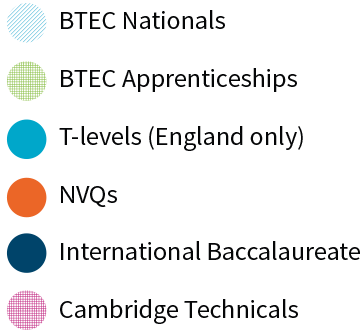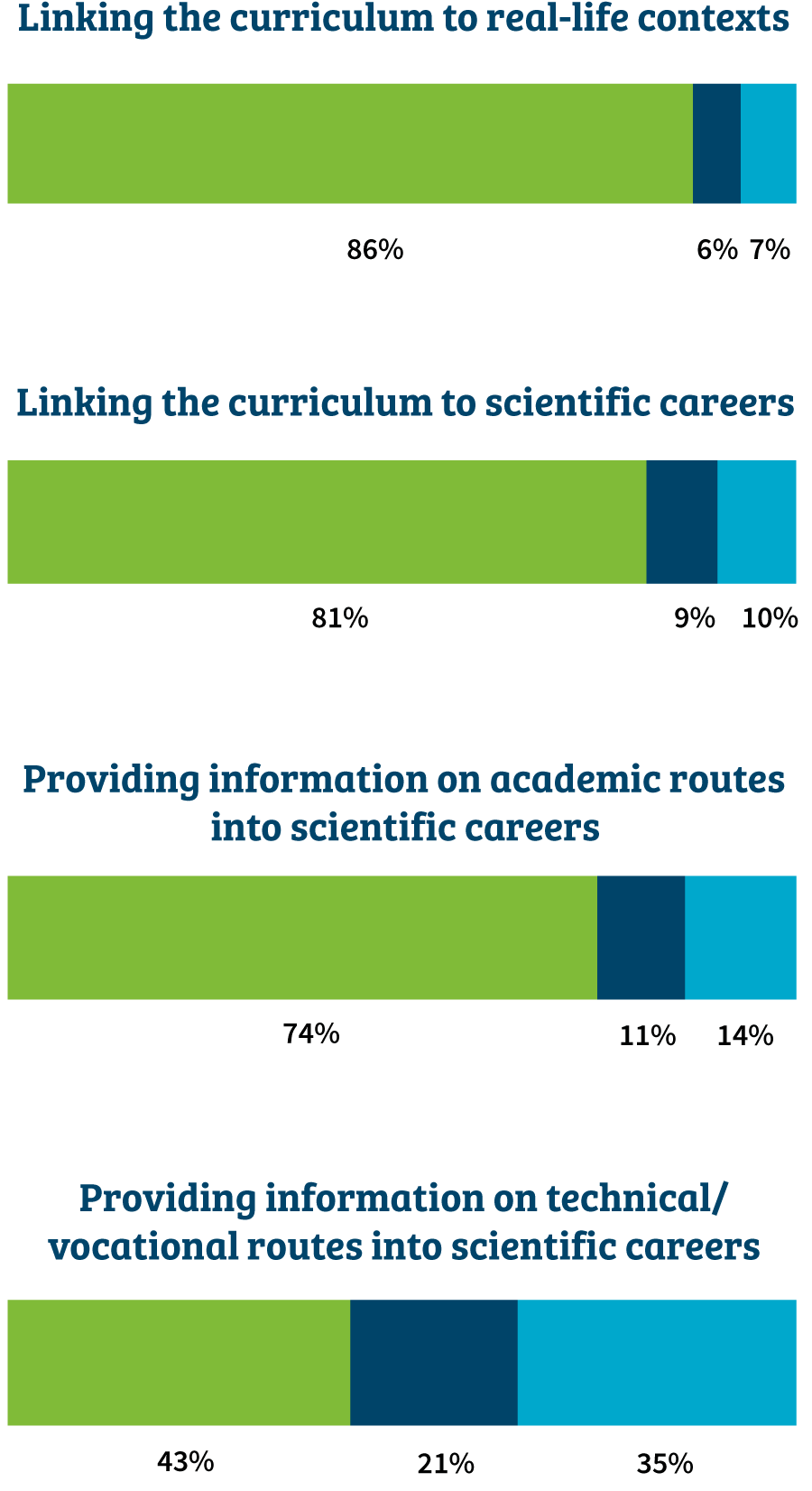In The ����ֱ��app���� Teaching Survey 2022, 73% of teachers in England, Wales and Northern Ireland said that the amount of curriculum content was ‘too much’ across all sciences. This year we asked respondents a number of questions about the curriculum to understand what changes, if any, should be made. This included questions about the programmes of study as well as vocational and technical routes into scientific careers.
Teachers share their reasons for curriculum changes
The changes that teachers recommend remove concepts that they feel most students do not need to learn. Reducing the amount of content in the curriculum could alleviate some of the demands on teachers’ time and create additional opportunities for practical experiments and to contextualise learning.
For example, in the case of ceramics and composite materials (a GCSE chemistry-only topic), 44% of teachers agreed that it should be removed from the curriculum entirely. Some teachers commented that the topic was not relevant to students studying chemistry post-16.
![]()
Verbatim comments in the survey reveal how teachers feel about these six ‘problem’ topics:
Quantitative chemistry:
Some content is very complex and should be done at A level (….) it’s just too challenging, especially for students who have to do the separate science (i.e. not chosen).
Life cycle assessment and recycling:
This is an important topic for understanding the processes involved in creating products and their impact on the world/climate. Giving more real examples of changes in processes and how to reduce impact on climate change would make it more interesting and relevant.
Ceramics/composite materials:
Ceramics is difficult to get students interested in. It is hard to link to the rest of the curriculum and seems to have free links to other areas. It is learning rather than understanding.
Teachers said that the following topics should be kept in the curriculum but revised:
- the earth’s water resources and obtaining potable water – 45%
- life cycle assessment and recycling – 44%
- quantitative chemistry – 41% (although 46% want it to be kept unchanged)
- electrolysis of molten ionic liquids and aqueous ionic solutions – 35% (although 38% want it to be kept unchanged)
The most commonly cited reasons for the changes were:
- to ensure the content demonstrates relevance or value or both
- to simplify, streamline, or reduce the content, or a combination of these
- to review the difficulty level.
Teachers said that the following topics should be removed from the curriculum:
- ceramics and composite materials (GCSE Chemistry only) – 44%
- condensation polymerisation (GCSE Chemistry only) – 26% (although 30% want it to be kept unchanged)
The most commonly cited reasons for the changes were:
- the topic lacks relevancy or value or both – 47%
- the topic is too difficult or challenging or both – 45%
Some teachers felt that the following topics should be kept without change:
- quantitative chemistry – 46%
- electrolysis of molten ionic liquids and aqueous ionic solutions – 38%
- condensation polymerisation – 30%
When asked how best to include more climate change content in the curriculum, teachers also indicated the reasons for their choice:
| What is the best way to include more climate change? | Most common reason |
|---|---|
| As an interdisciplinary module (biology, chemistry and physics) focusing on solving the problems of the future | Links with/involves all sciences/not subject-specific |
| Make the ‘real life applications’ within each discipline explicit | Demonstrates relevance/students can relate |
| Increase the amount of substantive climate change and sustainability content within each discipline | Important/relevant topic |
| I don’t want more climate change and sustainability content | Enough climate content already/too much repetition |
![]()
Teachers who answered: ‘Make the ‘real-life applications’ within each discipline explicit’.
I think the best way to teach this is by making it explicit to students how it will actually impact their lives, this is best done through highlighting the real-life applications. Building this into the curriculum would support delivering this to students as it would not be an 'extra' on top of the already heavy content.
This allows students to become aware of some of the challenges that they will face in their future and take ownership of their responses to those challenges. By studying solutions and ways to mitigate climate change, students can take ownership and become empowered to build a better future for themselves.
Teachers who answered: ‘As an interdisciplinary module (biology, chemistry and physics) focusing on solving the problems of the future:
I have taught interdisciplinary before and when it works, it works. However the sheer quantity of course material to cover at N5 in all sciences means that this could be a struggle to do.
It gives an opportunity to obtain a holistic approach rather than focusing on separate disciplines for learning how society is working on solving needs produced by climate change and sustainability.
![]()
When asked what would make teachers feel more confident in advocating vocational and technical pathways, some teachers said:
More links with further education – outside speakers and admissions staff, careers events etc.
CPD on how to present and integrate this into my lessons.
Specific training on what jobs are out there in the science fields as I am not sure. Up-to-date information each year on the skills society will need. Support linking real-life skills to science.

What we are doing
Our mission to enhance the landscape of chemistry education extends from primary through to further education and beyond.
We are driven by the values of inclusion, sustainability and practical work for a modern 11–19 chemistry curriculum. For example, we have been working closely with Qualifications Wales and WJEC (awarding body) to ensure the new science curriculum in Wales is fit for purpose.
Vocational and technical routes are essential for ensuring that careers in chemistry are accessible to all young people. They provide pathways to a range of different occupations aligned with industry needs. We will collaborate with education partners, schools and colleges to raise awareness of these pathways. Our aim is to help teachers feel confident discussing them and giving students a comprehensive understanding of their options.
In our support for chemistry education and teachers, we will continue to champion contexts, careers and diverse role models. Our aim is to help young people understand the purpose of science and see a clear path to chemical science careers.
To find out about a range of careers in the chemical sciences, visit .
Explore the full data set behind the ����ֱ��app���� Teaching Survey 2023
![]() Download questions and data explainer
Download questions and data explainer
Data tables
You can download all data tables by using the form below. Your data will be used to help us measure engagement depth, not to send unsolicited email communications, and will be retained for 12 months.
Download data tables




